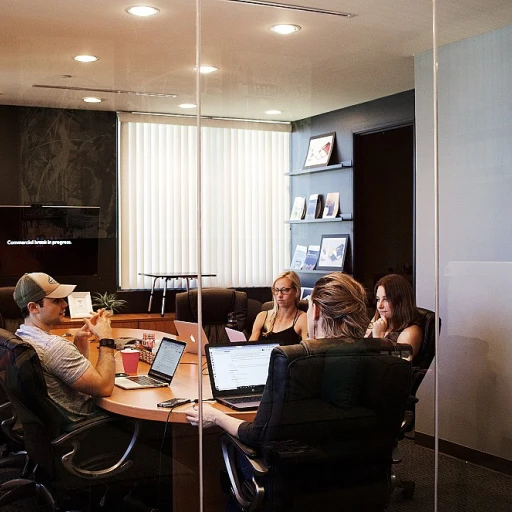Understanding the Benefits of a Three-Month Vertical Calendar
Unveiling the Advantages of a Vertical Calendar
Utilizing a three-month vertical calendar from July to September can be a game-changer for office management. This layout offers a comprehensive view that facilitates better planning and coordination. Here’s why this calendar style stands out:
- Comprehensive Overview: A three-month calendar provides an expansive view which helps in long-term planning. With July, August, and September neatly organized, managers can efficiently plan around significant events and federal holidays.
- Effortless Scheduling: By offering a visual trifecta, this layout minimizes the risk of scheduling conflicts, promoting smoother operations across departments.
- Increased Productivity: Having a clear outline of upcoming months on your wall helps keep track of monthly objectives and aligns team efforts with overarching yearly goals.
- Customisation: One of the significant benefits of this calendar is its adaptability. From printable options in PDF, Word, or Excel templates to digitally integrated formats, there’s a style for every office.
- Aesthetic Appeal: Not only functional, these calendars can be a decorative element in your office, elevating the work environment while aiding in organization.
Using a three-month calendar ensures that your office management runs like a well-oiled machine. For more insights into optimizing your workday, consider this
hourly guide. Encouraging productivity goes beyond just having a calendar, it’s about integrating efficient practices into daily work routines.
Customising Your Calendar for Optimal Office Management
Adapting the Calendar to Fit Your Office Needs
To make the most of a three-month vertical calendar from July to September, it's essential to customise it according to your office's unique requirements. Whether you choose to print or download a template in various formats such as PDF, Word, or Excel, these adjustments can significantly enhance your office management efficiency.
Consider implementing the following strategies:
- Highlight Key Dates: Make use of colour codes or highlight features in Excel or Word templates to mark important dates such as project deadlines, federal holidays, monthly meetings, and team-building activities. This will provide a clear visual reference for your team's schedule.
- Utilise Blank Spaces: Blank calendars offer room for creativity and flexibility, allowing you to add notes or reminders that are specific to your office's workflow. For instance, consider noting down monthly goals or recurring tasks in July, August, and September calendars.
- Template Selection: Opt for a calendar template that best suits your office culture. A wall calendar in the break room can serve as a central point for team discussions, while individual planner templates might better suit digital-savvy teams who prefer working with calendars in PDF format.
- Integration with Digital Tools: While customising your physical or digital calendar, ensure seamless integration with office software to avoid any double-booking or overlap in scheduling. This practice ties into integrating digital tools which will be discussed later in this article.
Customising your printable calendar plays a pivotal role in aligning office tasks with strategic goals. For more insights into optimising office space, check out this
guide on flexible desk arrangements. Ensuring your calendar meets the needs of your team fosters a proactive approach to office management, contributing to greater organisational success throughout the year.
Seamlessly Merging Traditional Calendars with Digital Tools
Integrating a three-month vertical calendar spanning from July to September with digital tools can enhance its utility while optimizing office management strategies. Here’s how you can effectively blend these two mediums:
- Digital Overlays on Physical Calendars: Combining the tactile feel of a printable wall calendar with digital overlays can significantly boost productivity. Many companies leverage tools like PDF readers or note-taking apps to add digital sticky notes or reminders to a blank calendar, ensuring important events aren't overlooked. You can download these as PDFs or use an Excel template to keep your updates in sync with your digital ecosystem.
- Cloud-Based Synchronization: By opting for calendar templates that provide cross-compatibility with Word and Excel, you can facilitate seamless data transfers to cloud-based services like Google Calendar. This way, even the monthly or yearly calendar updates across your office are immediately reflected in everyone’s digital planners, alleviating the common challenge of discrepancies.
- Integrating Federal Holidays Automatically: Modern applications often allow for the automatic embedding of federal holidays into your existing calendar template. By using free downloadable templates, you can import holidays directly into your document, ensuring that everyone in the office is on the same page.
- Real-Time Updates and Accessibility: Whether you utilize a month calendar or a comprehensive year calendar, ensuring real-time updates is crucial. Platforms offering free printable versions, which can be updated online and shared quickly across team members, help maintain monthly efficiency without the need for constant manual amendments.
- Case in Point: Several UK companies have reported improved time management and enhanced operational efficacy by integrating physical planners with digital tools, as discussed in the Innovative Approaches to Employee Wellness blog. By embedding routine wellness reminders or motivational prompts into their daily schedules, they've fostered a balanced work environment.
Embracing both traditional and digital calendars can fortify your office’s organization strategies. From three months to yearly calendars, the key lies in cultivating an adaptive approach that maximizes every planner’s potential, ensuring nothing falls through the cracks.
Addressing Common Challenges in Calendar Management
Overcoming Calendar Management Obstacles
Managing calendars, especially when dealing with a three-month vertical calendar from July to September, can present some challenges. These can range from tracking multiple projects to effectively using templates for various office needs. Here are a few strategies to help navigate these common hurdles:
- Handling Multiple Projects: A good approach is to use blank calendars to plot essential dates and deadlines before transferring them to the main planner. This allows for an overview of priorities for each month, enhancing focus and reducing clutter.
- Choosing the Right Template: With numerous calendar templates available, such as in Word, Excel, or PDF formats, pick one that best suits yearly planning or monthly highlights. Opt for a template that accommodates federal holidays or provides enough room for daily notes, ensuring all commitments are easily tracked.
- Printable and Download Options: Users can access printable calendar forms, which can be a lifesaver when technology fails. A wall calendar can offer a continuous visual reminder of tasks, making it easier to plan for holiday closures or team meetings.
- Managing Monthly Transitions: Calendar months that cover July through September often pair with summer activities and vacation plans. Utilize three month layouts to visualize time-off periods and ensure coverage, preventing productivity dips.
Regularly updating your planner and ensuring it is aligned with any digital tools will help maintain an organized workflow. Coupled with consistent reviews and optimizations, your office can significantly benefit from yearly calendars that cater to both short-term and long-term project planning.
Case Studies: Success Stories from UK Companies
Real-Life Applications of a Three-Month Vertical Calendar
In the fast-paced environment of UK businesses, implementing strategic tools such as a three-month vertical calendar has led to notable efficiencies. Let's delve into some success stories demonstrating the transformative impact of these calendars.
- Boost in Team Coordination: A leading marketing firm adopted the three-month vertical calendar layout to manage their campaigns for the months of July, August, and September. By having a comprehensive view of the upcoming quarter, teams could coordinate their activities better, plan around public holidays, and meet deadlines with improved precision.
- Simplified Project Management: A tech company leveraged these calendars to keep track of software development milestones. The printable calendar format, available in PDF and Excel templates, allowed project leads to align tasks seamlessly and monitor progress in a visual manner across the calendar months.
- Enhanced Employee Engagement: A financial consultancy enhanced their monthly planning sessions using yearly calendars with three-month blocks. This clarity encouraged transparency in project timelines, fostering a trust-driven environment among their workforce.
- Streamlined HR Operations: By utilising a wall calendar format, the HR department of a retail chain optimised employee shift planning, especially around busy periods and federal holidays, reducing instances of under- or over-staffing.
These real-world examples highlight the flexibility and effectiveness of integrating a three-month vertical calendar into office management practices. Whether you're using blank calendars for customization, or taking advantage of free printable versions, this tool can undoubtedly be a game-changer in achieving operational excellence. As illustrated, aligning them with digital tools or adopting innovative calendar templates can further amplify their effectiveness in organisational contexts.
Future Trends in Office Calendar Management
Emerging Trends in Calendar Usage for Enhanced Office Efficiency
In the dynamic landscape of office management, the application of wall and digital calendars is evolving rapidly. UK companies are continuously exploring new methodologies to optimise efficiency, especially with the utilisation of varied calendar formats such as monthly, yearly, and three-month templates. Here's what businesses can expect:
- Smart Integration with Technology: As highlighted earlier on customising your calendar, integrating with digital tools is becoming increasingly critical. Leveraging AI technologies to sync wall calendars with online tools ensures seamless data flow and reduces manual input errors.
- Increased Demand for Printable Templates: Many offices still rely on printable calendars due to their tangible nature. The flexibility of templates available in formats like PDF, Word, and Excel allows for easy customisation. Each month, businesses can download specific layouts, like the July to September three-month vertical calendar, to align with their timetables and holidays, including federal holidays adjustments.
- Customisation for Specific Needs: Blank calendars and customised planners have gained popularity as companies look for unique solutions to fit specific workflows. Offering templates that account for varying calendar months and planning scopes, from monthly to yearly, enhances adaptability.
- Automation and Data Analytics: As we delve into the future, automation in calendar management is expected to gain momentum. Companies are keen on investing in systems that automatically update schedules and offer insights based on past data trends. These innovations aim to improve decision-making processes and forecast planning.
- Mobile Accessibility: With the rise of remote working environments, having a calendar that can be accessed across devices is becoming a necessity. Printable calendars may still have a place for quick referencing on office walls, but mobile-optimised calendars ensure that information is anywhere an employee needs it on the go.
Adapting to these future trends while addressing common challenges in calendar management enables companies to streamline their operations. Whether through downloadable templates or integrating technology, embracing these changes is essential to staying competitive in today's fast-paced business world.

